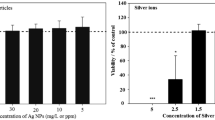Abstract
The structure, properties and application to water-soluble coatings of a new complex antimicrobial agent Ag-carboxylmethyl citosan-thiabendazole (Ag-CMCTS-TBZ) prepared from different materiel ratios were reported. The silver ions were preferably coordinated with the free — NH2 groups and the — OH groups of secondary alcohol and carboxyl in CMCTS. TBZ preferably bonded to carboxyl group in CMCTS by electrostatic force and hydrogen bonding. Increase in silver ions content in the complex agent improved to some limited extent the antibacterial activity, but enhanced coloring and cost of the complex agent. Increase in TBZ content resulted in increase of antifungal activity, but decrease of water solubility of the complex agent. The antimicrobial MICs of the complex agent to Esherichia coli, Staphylococcus aureus, Candida albicans, Aspergillus niger, Mucor sp. were 20 – 80, 15 – 60, 20 – 55, 40 – 250, and 400 – 1700 mg/kg, respectively. Addition of 0.1% of this complex agent to acrylic emulsion paint made the paint without substantial change in color, luster, viscosity, odor or pH value, but with an excellent and chronically persisting broad-spectra antimicrobial activity.
Similar content being viewed by others
References
XIA Jin-lan, WANG Chun, LIU Xin-xing. Antimicrobial agents and antimicrobial mechanisms[J]. Journal of Central South University (Natural Science), 2004, 35(1): 31–38. (in Chinese)
Berger T J, Spadaro J A, Chapin S E, et al. Electrically generated silver ions: quantitative effects on bacterial and mammalian cells [J]. Antimicrob Agents Chemother, 1976, (9): 357–358.
Berger T J, Spadaro J A, Bierman R, et al. Antifungal properties of electrically generated metallic ions[J]. Antimicrob Agents Chemother, 1976, (10): 856–860.
ZHAO Guo-jing, Stevens Jr S E. Multiple parameters for the comprehensive evaluation of the susceptibility of Escherichia coli to the silver ion[J]. BioMetals, 1998, (11): 27–32.
No H K, Park N Y, Lee S H, et al. Antibacterial activity of chitosans and chitosan oligomers with different molecular weights[J]. International Journal of Food Microbiology, 2002, (74): 65–72.
Devlieghere F, Vermeulen A, Debevere J. Chitosan: antimicrobial activity, interactions with food components and applicability as a coating on fruit and vegetables[J]. Food Microbiology, 2004, (21): 703–714.
Gil G, del M’onaco S, Cerrutti P, et al. Selective antimicrobial activity of chitosan on beer spoilage bacteria and brewing yeasts[J]. Biotechnology Letters, 2004, (26): 569–574.
Choi B K, Kim K Y, Yoo Y J, et al. In vitro antimicrobial activity of a chitooligosaccharide mixture against Actinobacillus actinomycetemcomitans and Streptococcus mutans[J]. International Journal of Antimicrobial Agents, 2001, (18): 553–557.
Roller S, Covill N. The antifungal properties of chitosan in laboratory media and apple juice[J]. International Journal of Food Microbiology, 1999, (47): 67–77.
ZHAN Xue-jun, XIONG Yuan-zhen, LIU Zhe, et al. Synthesis of silver carboxymethyl chitosan and its experimental study on its bacteriostasis [J]. Chinese Journal of Biochemical Pharmaceutics, 2001, 22(3): 142–144. (in Chinese)
ZHAO Yu-qing, LIU Bao-quan, LI Hui, JIANG Ben-guo. On coordination chitosan with Ag (I) and bacteriostasis of the complexes[J]. Journal of Beihua University (Natural Science), 2000, 1(5): 384–386. (in Chinese)
LI Kun-ying, LI Gui-shen. Analysis of TBZ in DiMei Yan Ji samples by ultraviolet absorption spectrophotometry[J]. Journal of Agricultural University of Hebei, 1997, 20(2): 106–109. (in Chinese)
Lim Sang-Hoon, Hudson S M. Synthesis and antimicrobial activity of a water-soluble chitosan derivative with a fiber-reactive group [J]. Carbohydrate research, 2004, (339): 313–319.
WANG Xiao-hui, DU Yu-min, LIU Hui. Preparation, characterization and antimicrobial activity of chitosan-Zn complex[J]. Carbohydrate Polymers, 2004, (56): 21–26.
Nieto J M, Peniche-Covas C, Del Bosque J. Preparation and characterization of a chitosan-Fe (III) complex[J]. Carbohydrate Polymers, 1992, (18): 221–224.
Piron E, Domard A. Interaction between chitosan and uranyl ions. Part 2. Mechanism of interaction [J]. International Journal of Biological Macromolecules, 1998, (22): 33–40.
Author information
Authors and Affiliations
Corresponding author
Additional information
Foundation item: Project (2001–1932) supported by the Funding for the Excellent Youth Teachers from the National Education Ministry of China
Rights and permissions
About this article
Cite this article
Xia, Jl., Wang, C., Nie, Zy. et al. Structure, properties and application to water-soluble coatings of complex antimicrobial agent Ag-carboxymethyl chitosan-thiabendazole. J Cent. South Univ. Technol. 12, 526–530 (2005). https://doi.org/10.1007/s11771-005-0116-8
Received:
Accepted:
Published:
Issue Date:
DOI: https://doi.org/10.1007/s11771-005-0116-8
Key words
- complex antimicrobial agent
- carboxylmethyl chitosan
- silver
- thiabendazole
- water-based acrylic emulsion paint
- water-soluble antimicrobial coating




